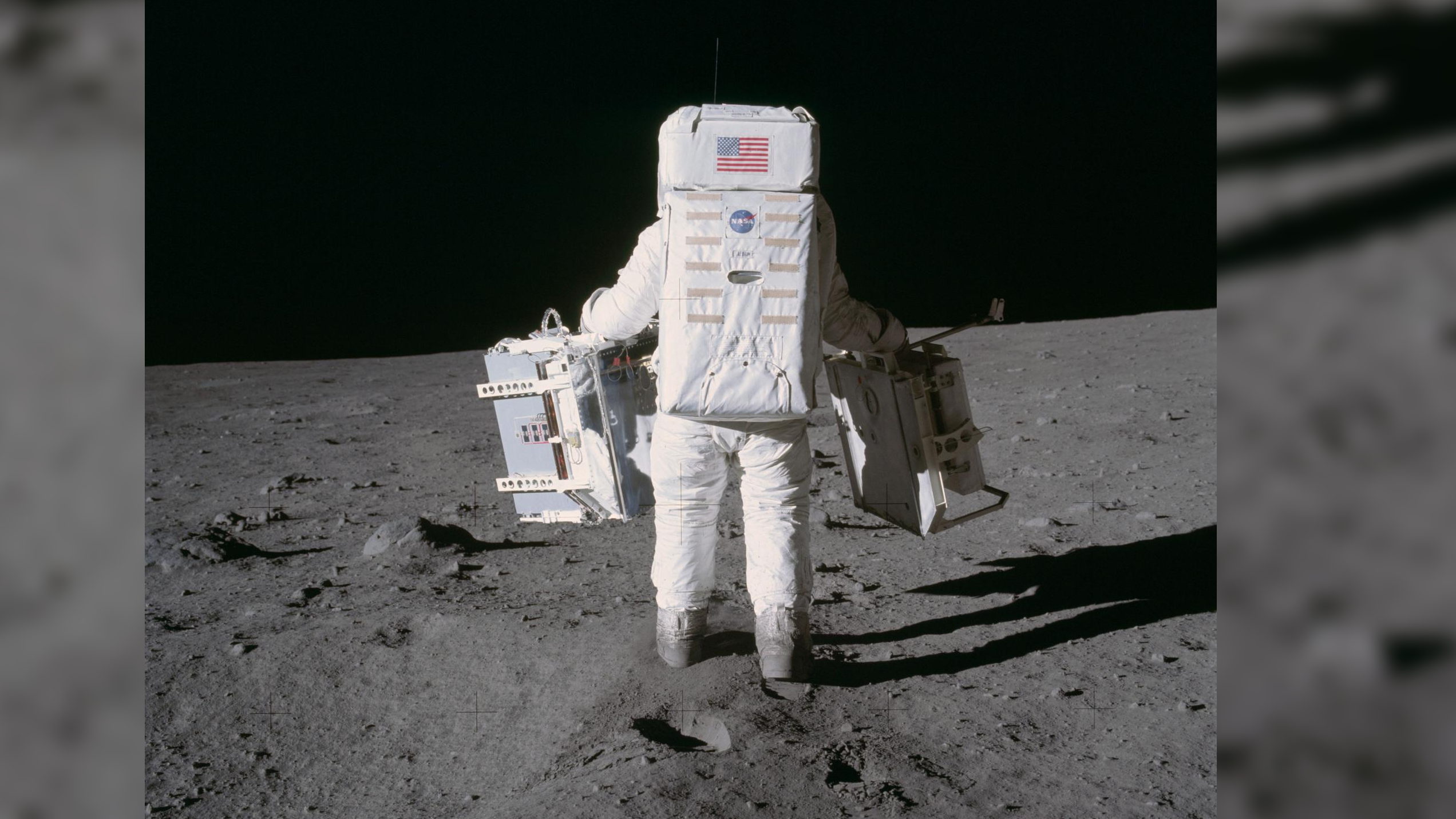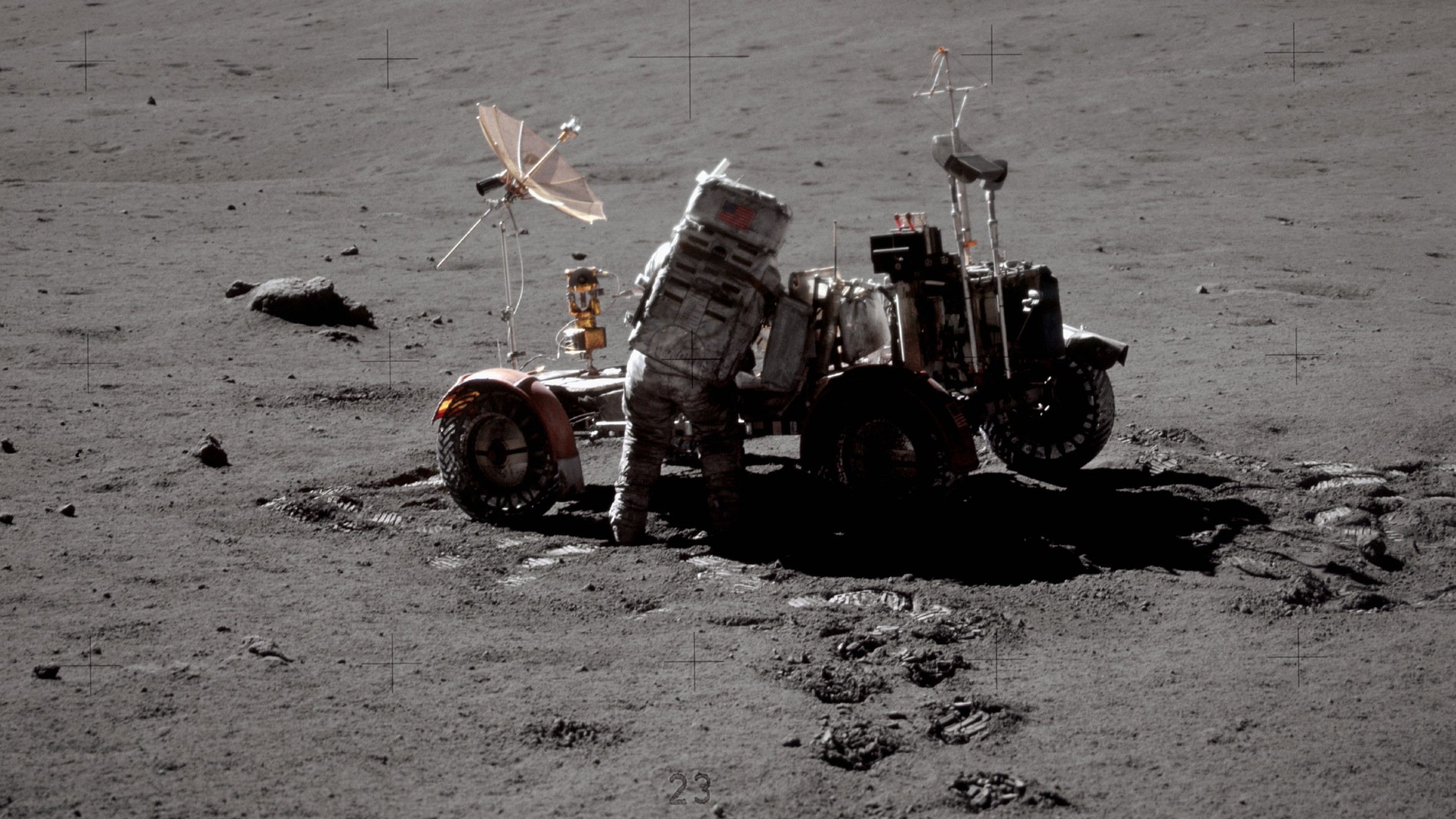How many people have walked on the moon?
Only 12 astronauts have walked on the moon. Discover who they are, which Apollo missions took them there, and when humans will return to the lunar surface.

Only 12 people have ever walked on the moon, making it one of the most exclusive clubs.
While hundreds of astronauts have traveled to space, only a select few have set foot on another world — Earth’s only natural satellite. Though the moon sits just 230,000 miles (370,000 kilometers) away, a mere cosmic hop in galactic terms, it remains a rare and remarkable destination for human exploration.
Related: How NASA's Artemis moon landing with astronauts works
List of every astronaut to walk on the moon
- Neil Armstrong — Apollo 11 (1969)
- Buzz Aldrin — Apollo 11 (1969)
- Charles "Pete" Conrad — Apollo 12 (1969)
- Alan Bean — Apollo 12 (1969)
- Alan Shepard — Apollo 14 (1971)
- Edgar Mitchell — Apollo 14 (1971)
- David Scott — Apollo 15 (1971)
- James Irwin — Apollo 15 (1971)
- John Young — Apollo 16 (1972)
- Charles Duke — Apollo 16 (1972)
- Eugene Cernan — Apollo 17 (1972)
- Harrison Schmitt — Apollo 17 (1972)
It was in 1962 that US President John F Kennedy committed his country to put an astronaut on the moon with the famous speech, "We choose to go to the moon in this decade and do the other things, not because they are easy, but because they are hard".
The backdrop for this ground-breaking achievement was the USA's Cold War "space race" competition with the Soviet Union, which had itself become the first nation to put a man — Yuri Gagarin — in space. Whoever got to the moon first would attain serious bragging rights.
And it was in 1969 that the ground-breaking first walk on the moon took place, with Neil Armstrong the first to make a footprint and utter the words "one small step for man, one giant leap for mankind".
Closely followed by Edwin "Buzz" Aldrin, the duo were the first of 12 people who have walked on the moon in what was termed the Apollo missions.
There are 24 people in all who have made the journey — all Americans — with the other 12 remaining on various spacecraft.
Who was the first and last person to walk on the moon?
The first person to walk on the moon was Neil Armstrong during the Apollo 11 mission in 1969.
The last person to walk on the moon was Eugene Cernan, during the Apollo 17 mission in 1972.
What is it like to walk on the moon?
One of the most remarkable aspects of walking on the moon is its low gravity. With the moon's gravity being about 1/6th of Earth's, you would weigh only 16% of your Earth weight and be able to jump approximately six times higher.
On the moon, you'd feel significantly lighter and notice the vivid colors due to the extremely thin atmosphere. Buzz Aldrin, the second person to walk on the moon, likened the experience to "a trampoline, but without the springiness and instability."
He described the moon's surface as being like "magnificent desolation", covered in powder and with a pitch-black sky. The Earth looked so small it could be blocked out by holding your thumb up to it.
"My most vivid memory on the moon is the beauty. The stark contrast between the brilliant grey of the moon and the blackness of space. The gray was so bright it was almost white — a sharp break between the surface and the horizon. The sun was always shining, so you didn't see stars or planets," Apollo 16 astronaut Charlie Duke told Forbes.

Setting foot on the moon had symbolic importance, but walking isn't very practical when you've got a whole lot of ground to cover and not much time.
So the invention of the Lunar Roving Vehicle (LRV) was a real game-changer for manned missions.
Used for the first time in 1971 by Apollo 15, the electric vehicle was lightweight and designed to operate in the low-gravity vacuum of the moon. It could be folded up for the flight and unpacked once the crew landed.
The rover could travel at almost 10 miles per hour (16 kilometers per hour) and had a range of about 55 miles (89 km).
Will humans walk on the moon again?
It has been a long time since humans last visited the moon, but NASA's Artemis Program aims to change that by returning humans to the lunar surface and landing the first woman and the first person of color there.
The program will collaborate with commercial and international partners to establish a permanent base on the moon, serving as a launchpad for a future mission to Mars. NASA initially aimed to reach the moon again by 2024, but the target date has been postponed to no earlier than mid-2027 with the Artemis 3 mission.
Additional resources
For more information about moon landings check out "Apollo's Legacy: Perspectives on the Moon Landings" by Roger D Launius and "Earthrise: How Man First Saw the Earth" by Robert Poole.
Bibliography
- NASA, "Who Has Walked on the Moon?", July 2020.
- Sarah Loff, "Apollo 11 Mission Overview", NASA, January 2022.
- National Air and Space Museum, "Apollo 11", accessed September 2022.
- The European Space Agency, "Lunar Exploration – ESA's missions", accessed September 2022.
- NASA, "Artemis", accessed September 2022.
- NASA, "The Apollo Program", accessed September 2022.
Join our Space Forums to keep talking space on the latest missions, night sky and more! And if you have a news tip, correction or comment, let us know at: community@space.com.
Get the Space.com Newsletter
Breaking space news, the latest updates on rocket launches, skywatching events and more!

Mark Smith is a freelance journalist and writer in Liverpool, England. A graduate in Information Systems, he has written on business, technology and world affairs for organizations ranging from the BBC, The Guardian, The Telegraph and How It Works Magazine, as well as magazines and websites in the United States, Europe and South East Asia. Subjects of his writing have ranged from quantum computing to the VFX of Tron. He is the author of "The Entrepreneur's Guide to the Art of War," which Booklist called "Essential reading for the business leaders of tomorrow and a fascinating study of the boardroom as the new battlefield."










